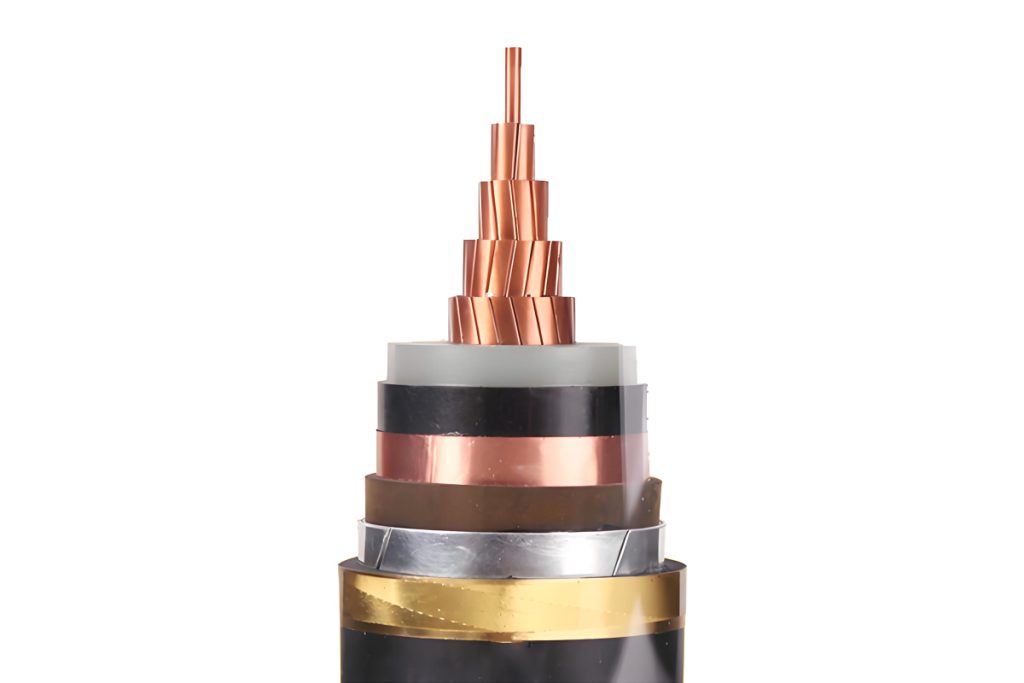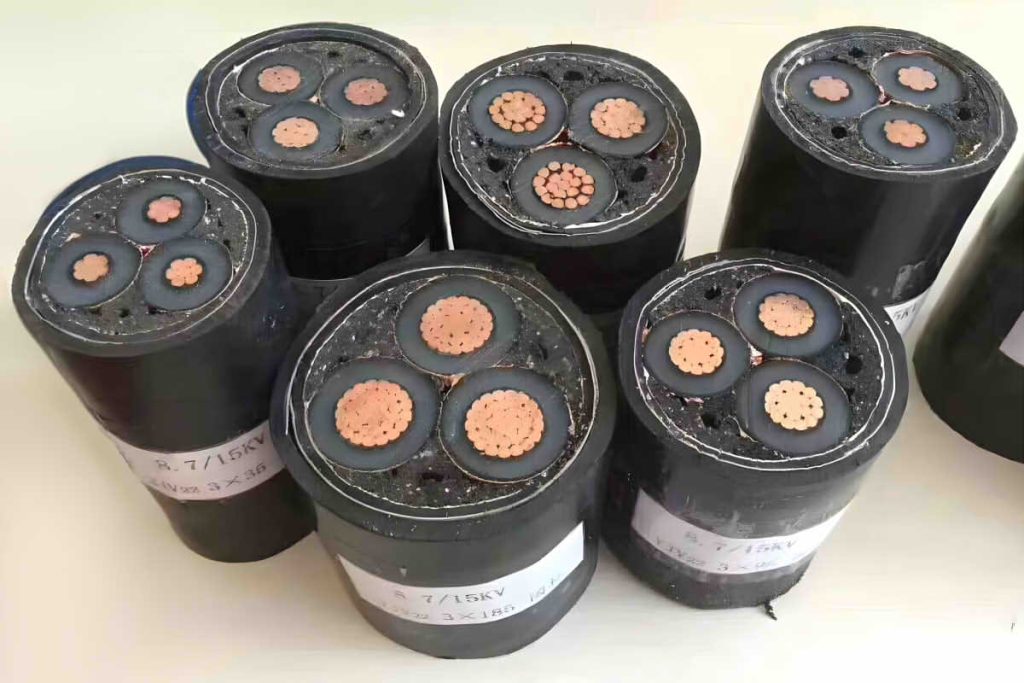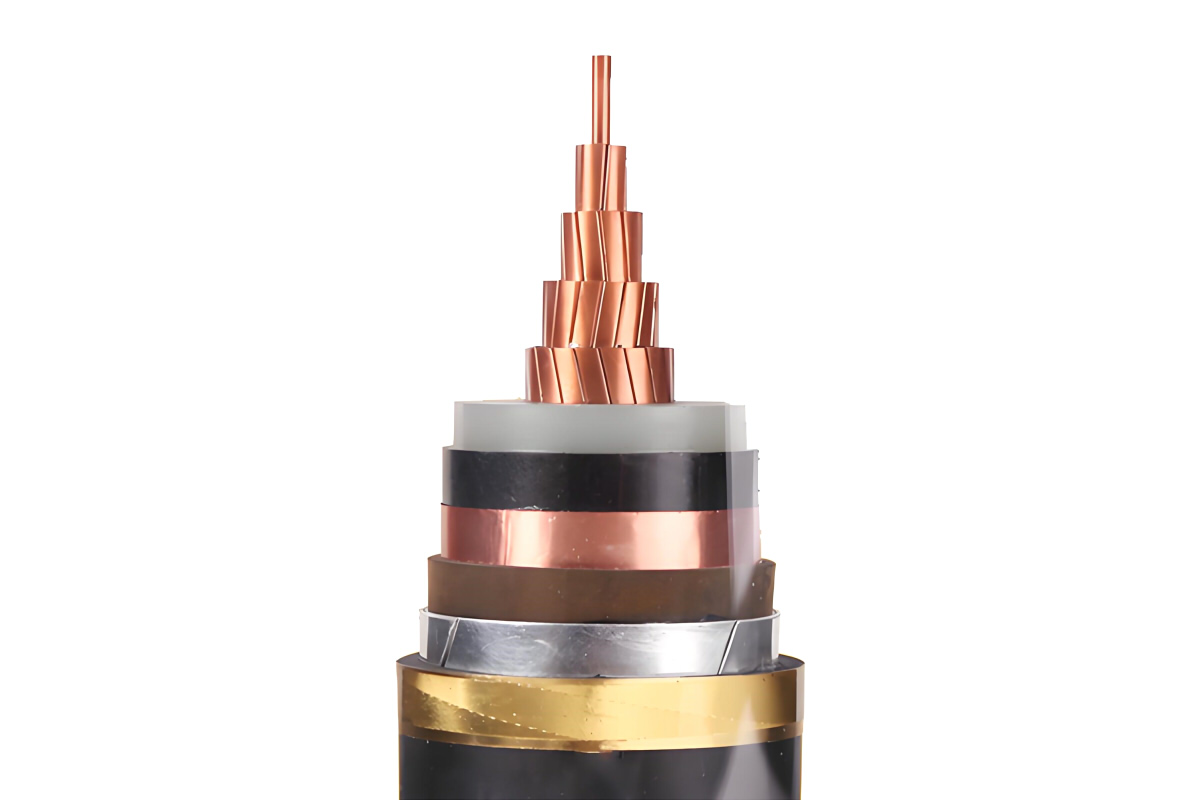Cables in electrical systems are an important part of connecting power plants, substations and users. Cables with different voltage levels have different designs and applications. This article will explore the main differences between two common types of medium voltage cables: the 10kV cable and the 15kV cable.

In power transmission systems, Medium voltage cables are commonly used in urban power grids and industrial distribution systems to transport and distribute electrical energy.. 10kV and 15kV cables are two types of medium voltage cables that are frequently used. Its nominal voltages are 10kV and 15kV, respectively (with an operating voltage of 8.7kV).
Voltage Level
The nominal voltage of a cable is usually presented in the form of Uo/U (One), for example, 3.6/6 (7.2), 6/6 (7.2), 6/10 (12), 8.7/10 (12), 8.7/15 (17.5), 12/20 (24), 18/30 (36) kV, etc. Uo represents the rated power frequency voltage between the cable conductor and the ground or metal shield in the cable design. U represents the nominal power frequency voltage between the conductors in the cable design. Um is the maximum voltage value that the equipment can withstand in the system.
- Cable de 8.7/10kV: Suitable for electrical systems with a maximum operating voltage of 10kV, and a maximum system voltage that generally does not exceed 12kV.
- 8.7/15kV cable: Suitable for electrical systems with a maximum operating voltage of 15kV, and a maximum system voltage that generally does not exceed 17.5kV.
Insulating Materials and Thickness
Because the 8.7/15kV cable must withstand higher voltage, Its insulating layer is usually thicker than that of the 8.7/10kV cable. This helps prevent partial discharge and electrical breakdown, increasing overall cable reliability.
- Cable de 8.7/10kV: Uses an insulating layer of cross-linked polyethylene (XLPE) standard thickness.
- 8.7/15kV cable: Employs thicker XLPE insulation layer to ensure safe operation.

Application Areas
- Cable de 8.7/10kV: Widely used in medium voltage distribution networks in industrial plants, commercial buildings and residential areas.
- 8.7/15kV cable: Mainly used in situations requiring higher voltage, like big factories, mines or long-distance power transmission lines.
Costs and Installation
As the voltage level increases, so does he cable cost. This is because higher voltage requires a thicker insulating layer and a more complex structural design.. Besides, Installation and maintenance of 8.7/15kV cables are more complicated and expensive.
Security Considerations
In high voltage environments, cable security is crucial. Higher voltage level means greater potential danger. Therefore, 8.7/15kV cable design focuses more on electrical performance and mechanical strength to ensure long-term reliable operation.
Conclusion
The main difference between the 10kV cable and the 15kV cable lies in the maximum continuous operating voltage that they can withstand. These differences affect the design of the cable, your application area, installation costs and requirements. In specific projects, The most suitable cable must be selected according to actual needs and budget.
Usually, in the operations of electric companies, to guarantee a sufficient margin in the electrical supply and face possible complex and unforeseen situations, The 8.7/15kV model is usually chosen. One of the important reasons is that 15 is approximately the square root of 3 times 8.7. This ratio has significant advantages in terms of stability and safety in power transmission and distribution..

